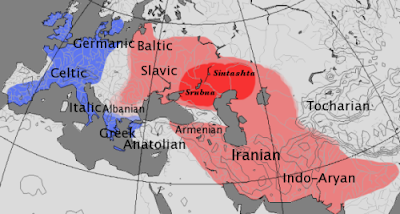 |
| Siddhartha came from he northwest frontier of India, now Sistan and Baluchistan province bordered by Iran, Afghanistan, and Pakistan, all parts of the former Indian empire. |
 |
| Padmapani, 10th-11th century (MetMuseum.org) |
This is the definition the Buddha gave it.
India's priestly caste, the Brahmins, claimed to be the original aryans. Brahmin originally meant a person born from Brahma's mouth. But this is only what they say of themselves. This educated elite was not universally considered the top of India's social pyramid.
The warrior caste (kshatriya, nobles, royals, rulers) were at the top, particularly in the northwest provinces, whereas Brahmins were their royal employees.
The warrior caste (kshatriya, nobles, royals, rulers) were at the top, particularly in the northwest provinces, whereas Brahmins were their royal employees.
- The Buddha of Afghanistan (RanajitPal.com)
- Aryan in Indian/Sanskrit literature (en.wikipedia.org)
- Buddhism in Iran (from the time of the Buddha)
- Who is the Bodhisat (Bodhisatta, Bodhisattva)
- Buddhism spread east as far as Vietnam (Indochina)
- New archaeological discoveries in Afghanistan, Mes Aynak, Tepe Naranj, and the Buddhist art of the Kabul river valley
 |
| Film (whatculture.com) |
The Manu Smriti (2.22) gives the name to "the tract between the Himalaya and the Vindhya ranges, from the eastern to the Western Sea"[Note 20] The title of Arya (Aryan) was used with various modifications throughout the Indian Subcontinent.
Kharavela, the Emperor of Kalinga around 1 BCE, is referred as an Arya in the Hatigumpha inscriptions of the Khandagiri-Udaigiri cave complex in Bhubaneswar, Orissa. The Gurjara Pratihara rulers in the 10th century bore the title Maharajadhiraja of Āryāvarta ("The lord of great kings of the land of the Aryans").[21]
Various Indian religions, chiefly Buddhism, Hinduism (Brahmanism), and Jainism use the term Arya as an epithet of honor. And it occurs as such in their religious texts and groupingss such as the Arya Samaj.
In the great Indian epics, the Ramayana and Mahabharata, Arya is used as an honorific for many characters including Hanuman and Ravana.
 |
| Indo-European languages spread through Europe and the Middle East 500 BCE (wiki) |
Aryan in Iranian literature
Wisdom Quarterly Wikipedia edit
Unlike the several meanings connected with ārya- in Old Indic, the Old Iranian term has solely an ethnic meaning.
This is in contrast to Indian usage, for which several secondary meanings evolved: The meaning of ar- as a self-identifier is preserved in Iranian usage, hence the words "Iran"/"Iranian" themselves.
The Iranian airya means "Iranian," and Iranian anairya means "Un-Iranian."
Arya may also be found as an ethnonym in newer Iranian languages, for instance, Alan/Persian Iran and Ossetian Ir/Iron[15]
 |
| Pensive Bodhisattva, NYC (metmuseum.org) |
This is in contrast to Indian usage, for which several secondary meanings evolved: The meaning of ar- as a self-identifier is preserved in Iranian usage, hence the words "Iran"/"Iranian" themselves.
The Iranian airya means "Iranian," and Iranian anairya means "Un-Iranian."
Arya may also be found as an ethnonym in newer Iranian languages, for instance, Alan/Persian Iran and Ossetian Ir/Iron[15]
The name Iran and Iranian are themselves equivalent to Aryan, where Iran means "land of the Aryans,"[6][13][13][15][23][24][25][26] and has been in use since Sassanid times[24][25]
 The sacred Avesta
texts (Zoroastrianism) clearly uses airya/airyan as an ethnic name (Vd. 1; Yt. 13.143-44,
etc.), where it appears in expressions such as airyāfi; daiŋˊhāvō
"Iranian lands, peoples," airyō.šayanəm "land inhabited by Iranians,"
and airyanəm vaējō vaŋhuyāfi; dāityayāfi; "Iranian stretch of the good
Dāityā," the river Oxus, the modern Āmū Daryā.[23]
The sacred Avesta
texts (Zoroastrianism) clearly uses airya/airyan as an ethnic name (Vd. 1; Yt. 13.143-44,
etc.), where it appears in expressions such as airyāfi; daiŋˊhāvō
"Iranian lands, peoples," airyō.šayanəm "land inhabited by Iranians,"
and airyanəm vaējō vaŋhuyāfi; dāityayāfi; "Iranian stretch of the good
Dāityā," the river Oxus, the modern Āmū Daryā.[23]Old Persian sources also use this term for Iranians. Old Persian -- which is a testament to the antiquity of the Persian language and which is related to most of the languages/dialects spoken in Iran including modern Persian, Kurdish, Gilaki, and Baluchi -- makes it clear that Iranians referred to themselves as Arya.
- The Buddha referred to himself in this way.
The term "Airya/Airyan" appears in the royal Old Persian inscriptions in three different contexts:
- as the name of the language of the Old Persian version of the inscription of Darius the Great in Behistun,
- as the ethnic background of Darius in inscriptions at Naqsh-e-Rostam and Susa (Dna, Dse) and Xerxes in the inscription from Persepolis (Xph), and
- as the definition of the God of Aryan people, Ahuramazda, in the Elamite version of the Behistun inscription.[13][15][23]
For example, in the Dna and Dse, Darius and Xerxes describe themselves
as "An Achaemenian, a Persian son of a Persian and an Aryan, of Aryan
stock."[27]
Although Darius the Great called his language the Aryan language,[27] modern scholars refer to it as Old Persian[27] because it is the ancestor of the modern Persian language.[28]
Although Darius the Great called his language the Aryan language,[27] modern scholars refer to it as Old Persian[27] because it is the ancestor of the modern Persian language.[28]
"The Old Persian and Avestan evidence is confirmed by the Greek sources."[23] Herodotus in his Histories remarks about the Iranian Medes that: "These Medes were called anciently by all people Arians" (7.62).[13][15][23]
In Armenian sources, the Parthians, Medes, and Persians are collectively referred to as Aryans.[29] Eudemus of Rhodes apud Damascius (Dubitationes et solutiones in Platonis Parmenidem 125 bis) refers to "the Magi and all those of Iranian (áreion) lineage"; Diodorus Siculus (1.94.2) considers Zoroaster (Zathraustēs or Zarathustra) as one of the Arianoi.[23]


































































































































































































































No comments:
Post a Comment